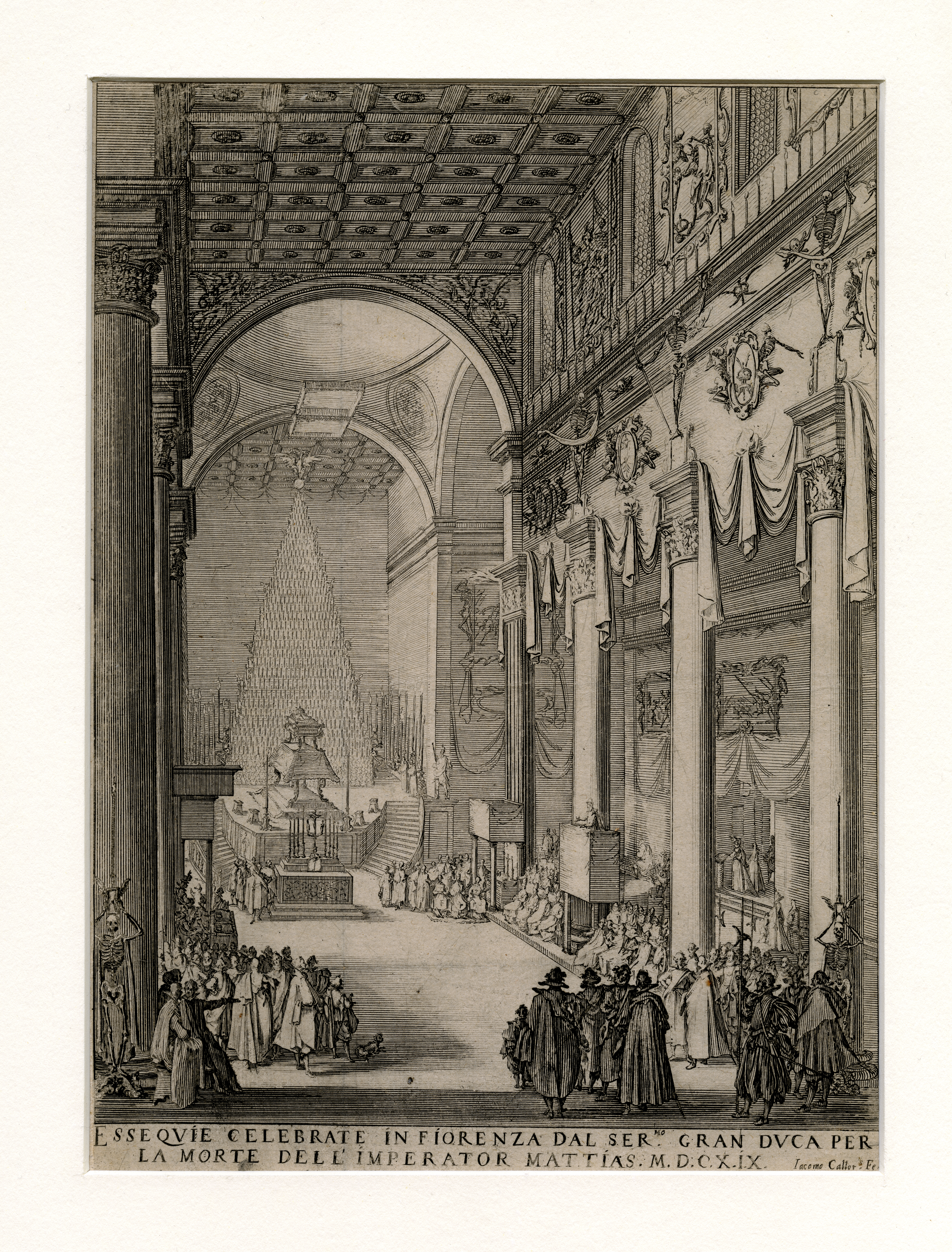Politics and Propaganda : The Catafalque de l'Empereure Matias
This piece is an etching created by Jacques Callot while he was working for the high court of Italy. It illustrates a funeral scene for the Holy Roman Emperor, Emperor Mathias, at the Basilica of San Lorenzo in Florence, Italy. Mathias was a member of the powerful Medici family that controlled a large territory across Europe. The Holy Roman Emperor's job was to defend christianity. Mathias died in 1619, and his death spurred the beginning of the 30 years war. The scene in the print fits with the typical Baroque funeral practices; churches were elaborately decorated with skeletons, drapery and portraits that display the divine power and piety of the ruler. The scene shows a large chapelle ardente, or a tower of candles, behind the altar. Other symbols of royalty are also seen such as a crown. The attendees of the funeral are members of the high court who are well dressed. They were ostentatious funeral ceremonies that were held across the territory they controlled. Because of the amount of funerals that were held, the body often did not travel to all of the funeral locations, calling them exequias reales. The funeral held at the Basilica of San Lorenzo did not have the body on site because Mathias died in Venice. Mathias was responsible for defending Catholicism so his funeral represented his power and leadership. The prints were used as media that were distributed to the people of Florence and beyond. It was important the people saw the images of the funeral because they signify the change in power, and also display the prosperity and power of the high court. Images such as this etching were used as political propaganda for the royalty to maintain their power.

